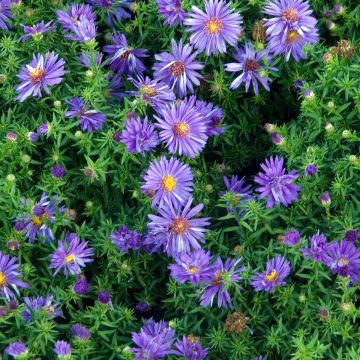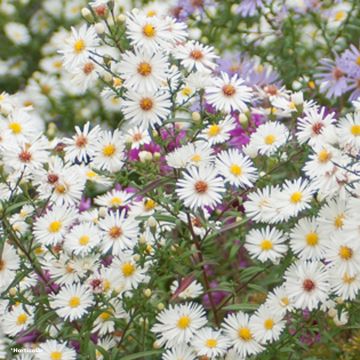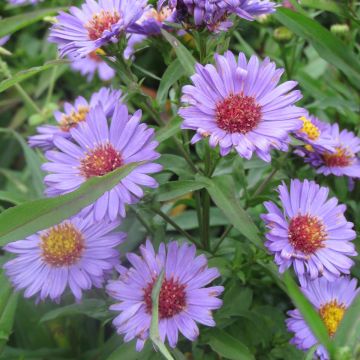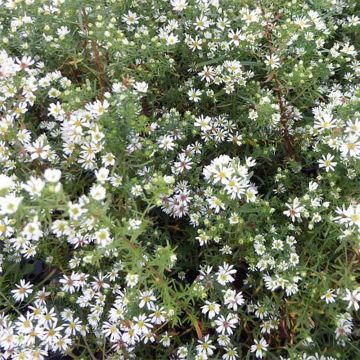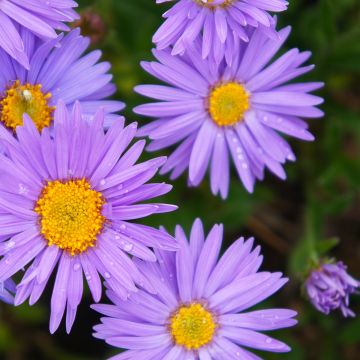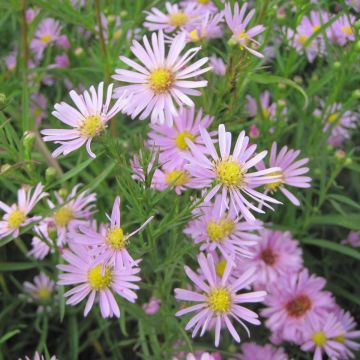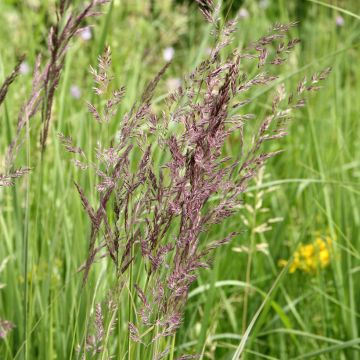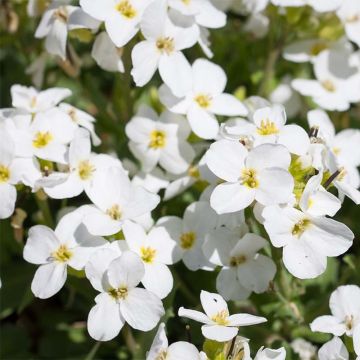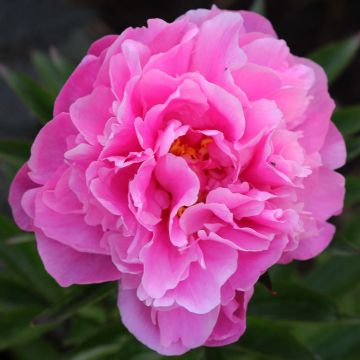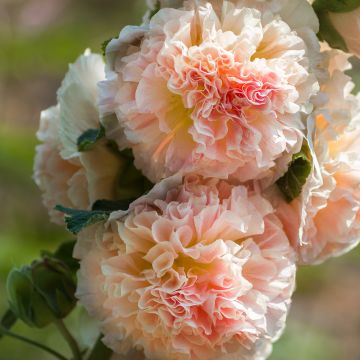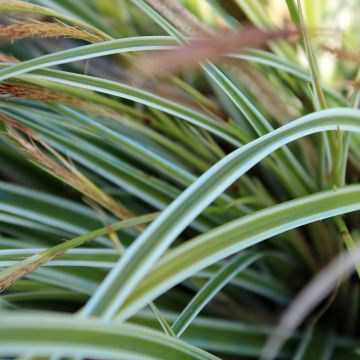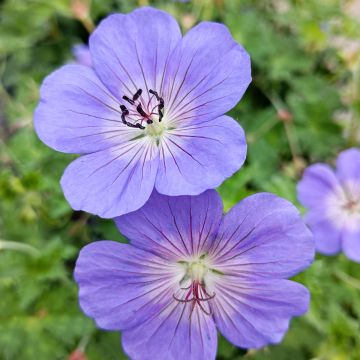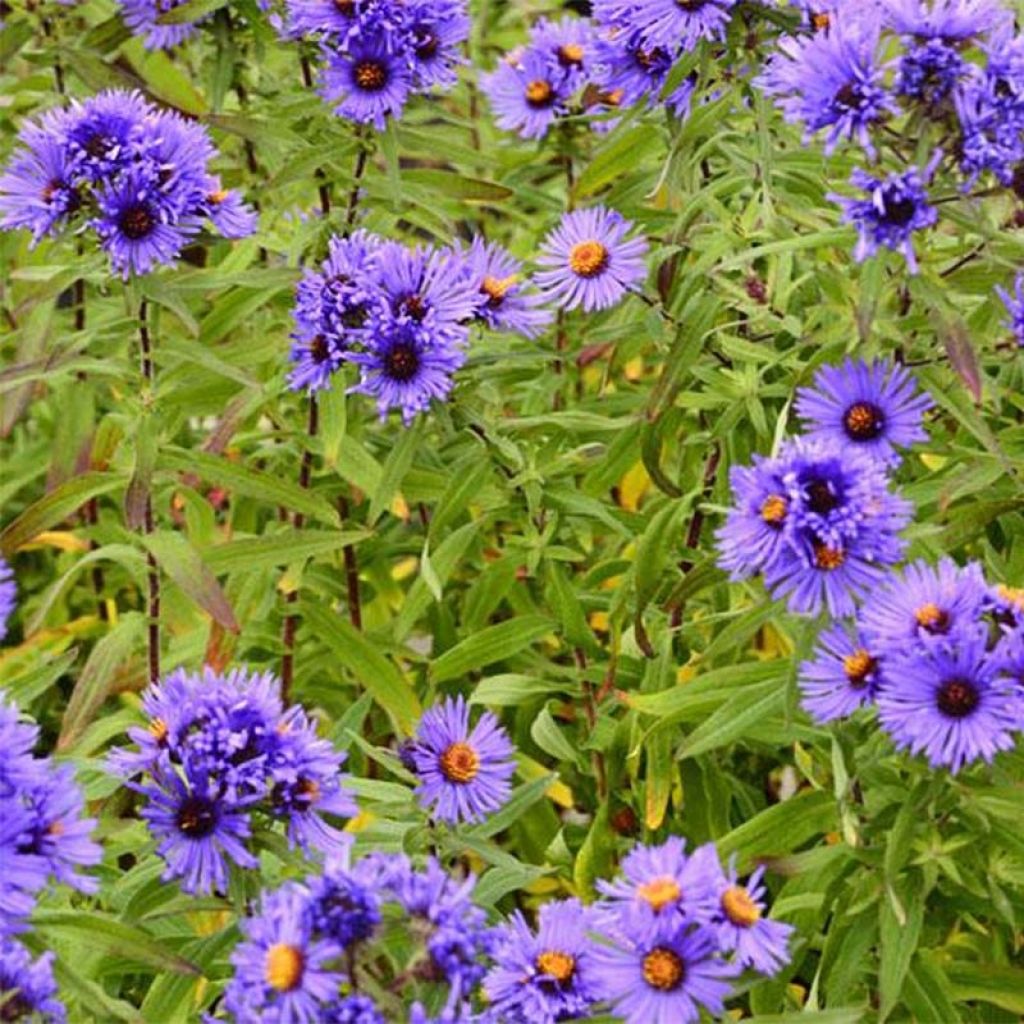

Aster novae-angliae Guido en Gezelle
Aster novae-angliae Guido en Gezelle
Aster novae-angliae Guido en Gezelle
New England Aster, Michaelmas Daisy
Only one has bloomed, and very weakly.
Christian, 16/09/2020
This item cannot be shipped to the selected country
Delivery charge from €5.90
More information
Schedule delivery date,
and select date in basket
This plant carries a 12 months recovery warranty
More information
We guarantee the quality of our plants for a full growing cycle, and will replace at our expense any plant that fails to recover under normal climatic and planting conditions.
From €5.90 for pickup delivery and €6.90 for home delivery
Express home delivery from €8.90.
Does this plant fit my garden?
Set up your Plantfit profile →
Description
Aster novae-angliae 'Guido en Gezelle' is a large and beautiful variety of New England Aster that is both disease resistant and excellent for mass planting. This variety produces numerous small, delicate daisies in a deep blue-purple colour, punctuated by a small golden yellow heart that turns purple. Autumn wouldn't be the season of colours without these perennials, covered in butterflies. Vigorous and easy to grow in any good, moisture-retaining garden soil, even in wet conditions.
The Asteraceae family, to which Asters belong, is primarily characterised by the shape of its flowers, known as capitules. This variety, derived from the North American species novae angliae, is particularly resistant to diseases: its rough foliage does not allow pathogenic fungus spores such as powdery mildew and downy mildew to settle. 'Guido en Gezelle' develops into a bush of dark, woody, leafy stems, reaching a height of 1.50 m (5ft). This variety blooms abundantly in September-October. Neither wind nor the weight of the flower clusters will knock down this plant, which remains firmly anchored by sturdy stems. Each flower or capitule, measuring 4 cm (2in) in diameter, is composed of numerous ligules, or petals, in a deep blue-purple colour, surrounding a small centre that transitions from yellow to purple. To maintain a good habit make sure not to overwater your asters, but also avoid intense drought during the summer. It prefers full sun but will appreciate having its base protected by a thick mulch. It is a deciduous perennial, its above-ground vegetation drying out in winter.
The 'Guido en Gezelle' Aster is perfect for beds and borders, to extend the flowering season in the garden into autumn, but you can also place it in large containers with Japanese lanterns (Physalis alkekengi) to brighten up the surroundings of your home. This combination will also be delightful in large bouquets. This particularly sturdy plant will delight less meticulous gardeners as it manages to survive without care, even in neglected gardens. In the ground, create a rural ambience around your asters with other tall perennials (Echinaceas, goldenrods, polychrome spurge) and small bushes. Adding some evergreen foliage will provide some greenery to accompany the Asters until the end of their flowering.
Report an error about the product description
Aster novae-angliae Guido en Gezelle in pictures
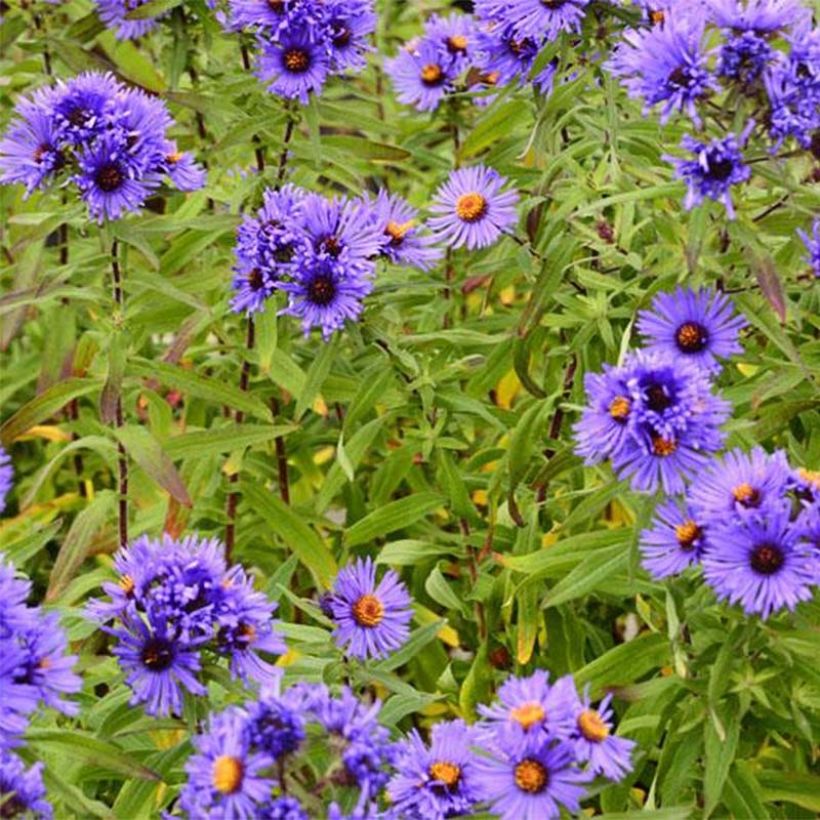

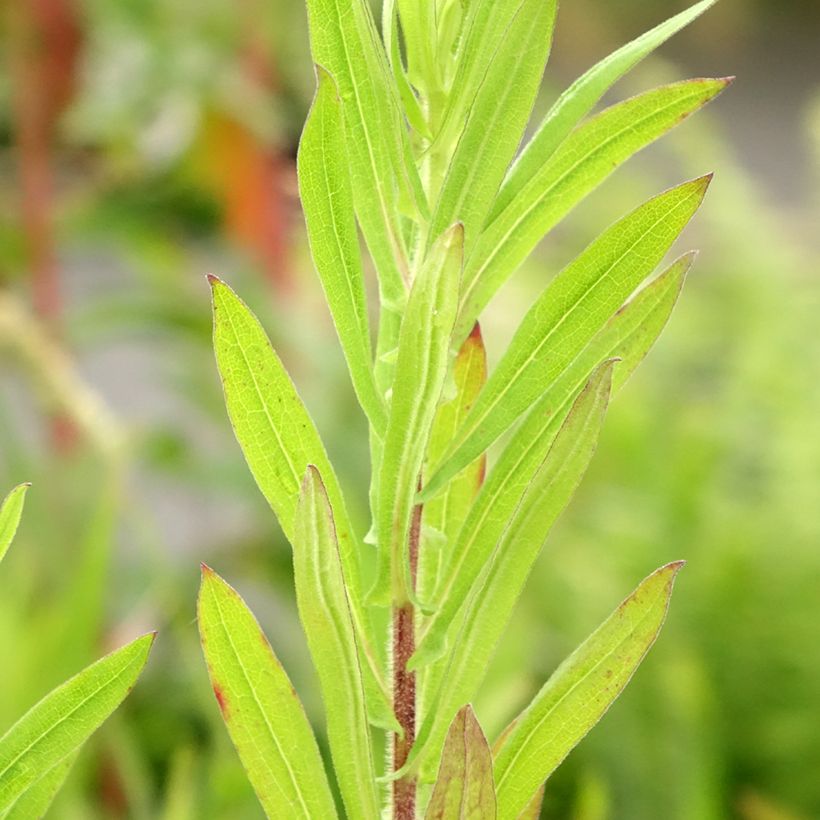

Flowering
Foliage
Plant habit
Botanical data
Aster
novae-angliae
Guido en Gezelle
Asteraceae
New England Aster, Michaelmas Daisy
Cultivar or hybrid
Other Asters
Planting and care
Plant Aster novae-angliae in autumn or spring in a regular, rich and well-worked soil. It can withstand temperatures as low as -25°C (1°F). It prefers a sunny exposure but can tolerate partial shade, where it will have a slightly looser habit. Strong winds should be avoided as they could flatten the clumps. Unlike older varieties, 'Guido en Gezelle' does not require staking. Once planted, it should not be moved as it does not appreciate change. In beds, leave at least 50 cm (20in) spacing between plants. This plant does not tolerate competition from other roots. Mulch the soil from June onwards and water in case of heatwaves. New England Asters are not susceptible to powdery mildew and downy mildew and they tolerate wet soils well. Divide the clumps every three years to keep them floriferous. Do not replant the divisions in the same spot, and give them a rich soil.
Planting period
Intended location
Care
-
, onOrder confirmed
Reply from on Promesse de fleurs
Foolproof perennials
Haven't found what you were looking for?
Hardiness is the lowest winter temperature a plant can endure without suffering serious damage or even dying. However, hardiness is affected by location (a sheltered area, such as a patio), protection (winter cover) and soil type (hardiness is improved by well-drained soil).

Photo Sharing Terms & Conditions
In order to encourage gardeners to interact and share their experiences, Promesse de fleurs offers various media enabling content to be uploaded onto its Site - in particular via the ‘Photo sharing’ module.
The User agrees to refrain from:
- Posting any content that is illegal, prejudicial, insulting, racist, inciteful to hatred, revisionist, contrary to public decency, that infringes on privacy or on the privacy rights of third parties, in particular the publicity rights of persons and goods, intellectual property rights, or the right to privacy.
- Submitting content on behalf of a third party;
- Impersonate the identity of a third party and/or publish any personal information about a third party;
In general, the User undertakes to refrain from any unethical behaviour.
All Content (in particular text, comments, files, images, photos, videos, creative works, etc.), which may be subject to property or intellectual property rights, image or other private rights, shall remain the property of the User, subject to the limited rights granted by the terms of the licence granted by Promesse de fleurs as stated below. Users are at liberty to publish or not to publish such Content on the Site, notably via the ‘Photo Sharing’ facility, and accept that this Content shall be made public and freely accessible, notably on the Internet.
Users further acknowledge, undertake to have ,and guarantee that they hold all necessary rights and permissions to publish such material on the Site, in particular with regard to the legislation in force pertaining to any privacy, property, intellectual property, image, or contractual rights, or rights of any other nature. By publishing such Content on the Site, Users acknowledge accepting full liability as publishers of the Content within the meaning of the law, and grant Promesse de fleurs, free of charge, an inclusive, worldwide licence for the said Content for the entire duration of its publication, including all reproduction, representation, up/downloading, displaying, performing, transmission, and storage rights.
Users also grant permission for their name to be linked to the Content and accept that this link may not always be made available.
By engaging in posting material, Users consent to their Content becoming automatically accessible on the Internet, in particular on other sites and/or blogs and/or web pages of the Promesse de fleurs site, including in particular social pages and the Promesse de fleurs catalogue.
Users may secure the removal of entrusted content free of charge by issuing a simple request via our contact form.
The flowering period indicated on our website applies to countries and regions located in USDA zone 8 (France, the United Kingdom, Ireland, the Netherlands, etc.)
It will vary according to where you live:
- In zones 9 to 10 (Italy, Spain, Greece, etc.), flowering will occur about 2 to 4 weeks earlier.
- In zones 6 to 7 (Germany, Poland, Slovenia, and lower mountainous regions), flowering will be delayed by 2 to 3 weeks.
- In zone 5 (Central Europe, Scandinavia), blooming will be delayed by 3 to 5 weeks.
In temperate climates, pruning of spring-flowering shrubs (forsythia, spireas, etc.) should be done just after flowering.
Pruning of summer-flowering shrubs (Indian Lilac, Perovskia, etc.) can be done in winter or spring.
In cold regions as well as with frost-sensitive plants, avoid pruning too early when severe frosts may still occur.
The planting period indicated on our website applies to countries and regions located in USDA zone 8 (France, United Kingdom, Ireland, Netherlands).
It will vary according to where you live:
- In Mediterranean zones (Marseille, Madrid, Milan, etc.), autumn and winter are the best planting periods.
- In continental zones (Strasbourg, Munich, Vienna, etc.), delay planting by 2 to 3 weeks in spring and bring it forward by 2 to 4 weeks in autumn.
- In mountainous regions (the Alps, Pyrenees, Carpathians, etc.), it is best to plant in late spring (May-June) or late summer (August-September).
The harvesting period indicated on our website applies to countries and regions in USDA zone 8 (France, England, Ireland, the Netherlands).
In colder areas (Scandinavia, Poland, Austria...) fruit and vegetable harvests are likely to be delayed by 3-4 weeks.
In warmer areas (Italy, Spain, Greece, etc.), harvesting will probably take place earlier, depending on weather conditions.
The sowing periods indicated on our website apply to countries and regions within USDA Zone 8 (France, UK, Ireland, Netherlands).
In colder areas (Scandinavia, Poland, Austria...), delay any outdoor sowing by 3-4 weeks, or sow under glass.
In warmer climes (Italy, Spain, Greece, etc.), bring outdoor sowing forward by a few weeks.

































